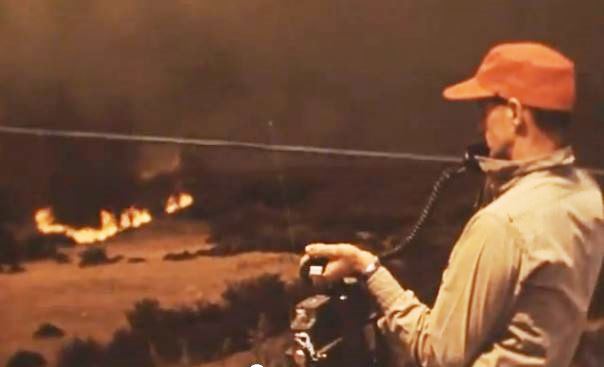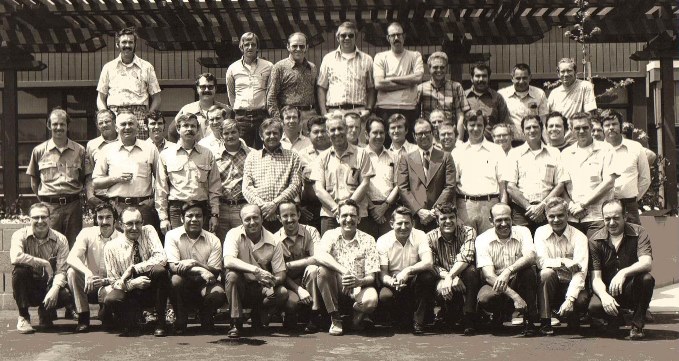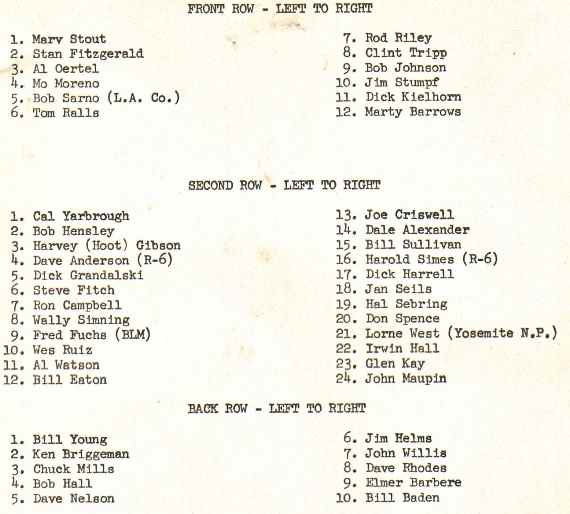A late 1940s era training film showing some of the latest firefighting techniques and fire science.
Tag: history
“Building the Fire Line”
Wildfire briefing, February 22, 2014
President Obama to meet with western governors about wildfire funding
On Monday President Obama will meet with the governors of some western states to discuss a change he is proposing in next year’s budget about how wildfires are funded. A busy and expensive wildfire season means the federal land management agencies have to rob dollars from routine ongoing non-fire activities to pay unusually high fire suppression expenses. And these busy and expensive fire seasons seem to be occurring with more regularity in recent years. The budget proposal for fiscal year 2015 would be similar to a bill introduced in the House, the Wildfire Disaster Funding Act of 2014 (H.R. 3992), which would create an emergency funding process for fire response. The funding mechanism would be structured along the same lines as procedures for paying for other natural disasters like floods and hurricanes.
Wildfires challenged early pioneers
The Santa Fe New Mexican has an interesting article by Marc Simmons about how early settlers had to occasionally deal with prairie fires as they traveled by horseback and wagon train across New Mexico and west Texas. Below is an excerpt:
…On another trip [in the 1830s, Josiah] Gregg’s caravan was chased by an approaching prairie fire, and it escaped just in time by reaching a bare stretch of country, devoid of grass. “These conflagrations,” he wrote, “are enough to inspire terror and daunt the stoutest heart.”
Capt. Randolph B. Marcy, leading a military expedition across the Southwest in the 1850s, had an experience similar to Gregg’s. One of his soldiers carelessly caught the grass on fire, threatening the supply wagons. He declared that only the most strenuous efforts by his 200 men in setting counter fires around the train saved the expedition from disaster.
Great danger, he said, came from troops throwing a lighted match or ashes from a pipe into the grass while marching. Matches were just then coming into general use, so that was a new problem.
When a prairie fire struck, various steps could be taken in the emergency. Marcy mentioned one, setting a counter or back fire. The hope was when the two fires met, the progress of both would be checked and they would die out.
However, we question something the author identified as one of the causes of fires that threatened travelers:
…But the sun could be blamed on occasion, when its refracted light on a piece of broken glass or bit of metal cast off by a wagon train set the grass ablaze.
It is very unusual for glass, broken or otherwise, to start a fire. But if a bottle contains water, in very rare circumstances it can act like a lens and concentrate sunlight, similar to a magnifying glass. We have never heard of an ordinary piece of metal causing a fire.
Utah’s “firefighting cows”
In recent years ranchers and state lawmakers in Utah have argued with the federal government over water rights on federal land that is used by cattle ranchers. In order to bolster their case, some of the ranchers point out that the animals reduce vegetation — and the threat from fires.
Below is an excerpt from the Deseret News:
Utah is a “livestock state” that recognizes the benefits that cattle confer on pubic lands, including keeping vegetative overgrowth at bay and thus reducing wildfire threats, said Sterling Brown of the Utah Farm Bureau.
“Cattle are one way to properly manage public lands,” he said. “We have deemed much of our livestock as firefighting cows because they have helped reduce fires out there.”
Archive photo, southern California firefighters 40 years ago
Diana Campbell Ellison, former wife of Ron Campbell, was kind enough to send us this photo of firefighters that was most likely taken in the late 1960s or early 1970s, probably in southern California. Since most of them are not wearing uniforms, the photo was undoubtedly taken at a meeting or training session. Quite a few people in the photo went on to very distinguished careers in wildland fire. Click HERE to see a higher resolution version of the photo.
A classic film: “Watershed Wildfire”

When I first started as a firefighter on the El Cariso Hot Shots in 1970 we were shown a lot of training films. One of them was about the 1955 Refugio Canyon Fire, titled “Watershed Wildfire”. It describes how firefighters fought the fire near Santa Barbara, California, which was 77,000 or 85,000 acres depending on the report, and how an early version of a Burned Area Emergency Response (BAER) team worked quickly after the fire was out to stabilize slopes and reduce the chances of flooding and damage to reservoirs.
Even in 1970 it had the air of an old, classic film with a dramatic custom-written musical sound track, antique trucks, and firefighters with no personal protective equipment. A packset “HandiTalky” radio weighing several pounds with a remote telephone-like handset was shown as the narrator said, “The firefighters’ arsenal was equipped with the latest weapons”. Later he says “It takes trained men to fight fire”, a statement that perhaps needed to be said in 1955. Marines are seen using military flame throwers to ignite a backfire or burnout and later biplanes reseed the barren slopes.
The Santa Barbara Independent has an interesting article about the fire.
Now you can have the pleasure of viewing this classic film. The sound is pretty bad at first, but it improves 90 seconds in.
If the video will not play on your device click HERE to see it on YouTube.
Thanks go out to Jim
Forest discovered that will never burn
An ancient cypress forest has been discovered at the bottom of the Gulf of Mexico 60 feet under water about 10 miles off the coast of Alabama. An examination of samples from the trees using radiocarbon dating estimated that they are over 50,000 years old. The wood is remarkably well preserved and has the distinct aroma of cypress when it is sawn, researchers said.
The fact that the trees are under water is due to changing sea levels caused by ice ages coming and going and the land mass in southern Alabama rising and subsiding over the last 50,000 to 80,000 years.
Scientists think massive waves during Hurricane Katrina rearranged the sand and silt on the ocean floor, uncovering the forest after it had been hidden for eons.
More information is at al.com.






